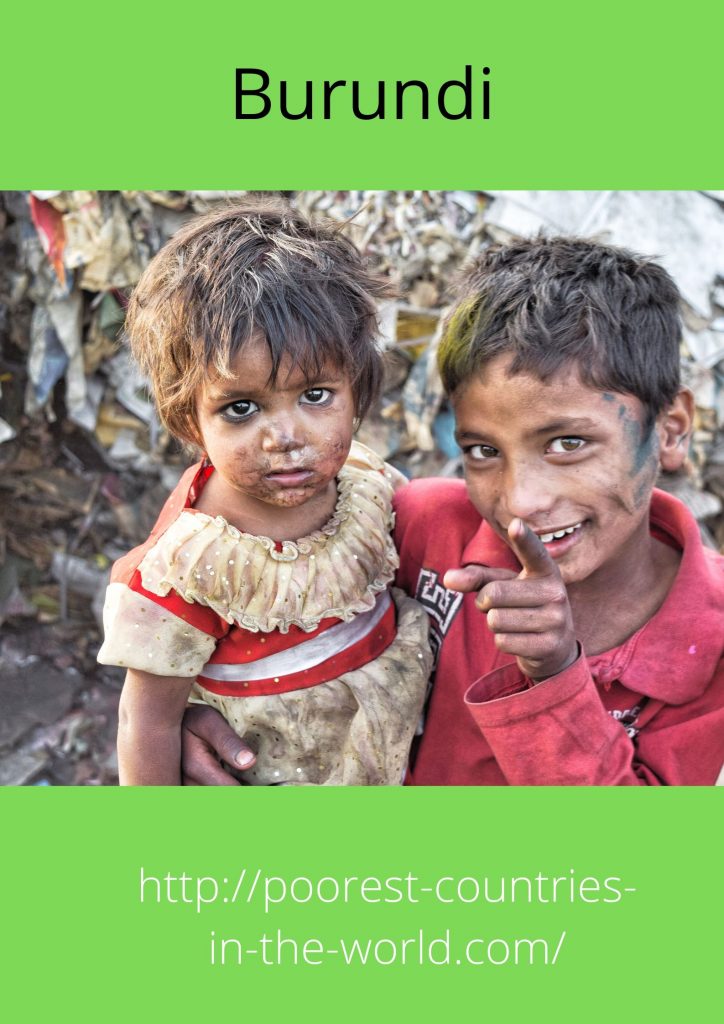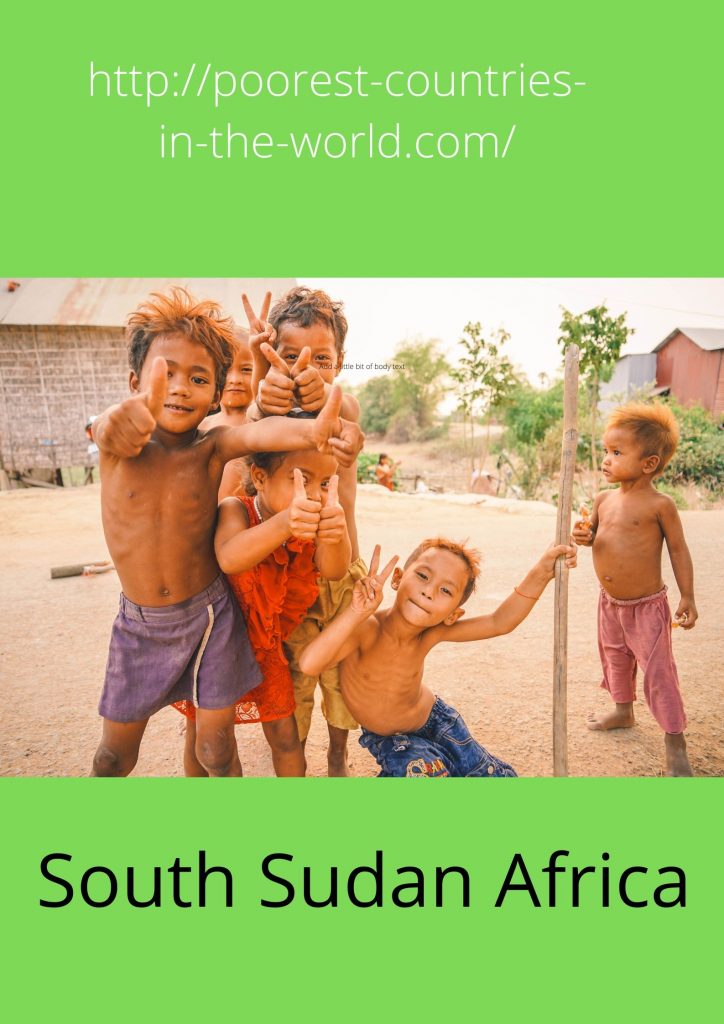In today’s globalized world, economic disparities persist, and many nations continue to struggle with poverty and underdevelopment. The year 2023 brings to light the ongoing challenges faced by some of the world’s poorest countries. This article delves into the top 10 countries facing extreme poverty and explores the underlying factors contributing to their economic struggles.
Also Read: Poorest countries in Africa
Table of Contents
- Introduction
- Understanding Poverty Measurements
- Factors Contributing to Poverty
- Economic Instability
- Political Corruption
- Lack of Infrastructure
- Limited Access to Education
- List of Top 10 Poorest Countries in 2023
- Burundi
- South Sudan
- Malawi
- Niger
- Mozambique
- Democratic Republic of Congo (DRC)
- Central African Republic (CAR)
- Liberia
- Guinea-Bissau
- Sierra Leone
- A Closer Look at the Poorest Countries
- Burundi: A Fragile Economy
- South Sudan: Struggling with Conflict
- Malawi: Agricultural Dependency
- Niger: Battling Resource Scarcity
- Mozambique: Challenges in Infrastructure
- DRC: Natural Riches, Political Turmoil
- CAR: Instability and Humanitarian Crisis
- Liberia: Post-Conflict Recovery
- Guinea-Bissau: Political Instability
- Sierra Leone: Rebuilding After Civil War
- Efforts and Initiatives for Change
- Global Partnerships for Poverty Alleviation
- The Role of Education in Breaking the Cycle
- Conclusion
Introduction
Poverty is a multidimensional issue that encompasses not only financial deprivation but also limited access to basic necessities and opportunities. The world’s poorest countries face complex challenges that hinder their progress towards economic growth and development. In this article, we’ll delve into the top 10 poorest countries in 2023, shedding light on the factors that contribute to their dire circumstances.
Understanding Poverty Measurements
Measuring poverty goes beyond just assessing income levels. It involves considering aspects such as education, healthcare, housing, and overall living standards. The United Nations Human Development Index (HDI) is a widely accepted measurement that evaluates countries based on these factors, giving us a comprehensive view of their development status.
Factors Contributing to Poverty
Economic Instability
Several interconnected factors perpetuate poverty in these nations:
Frequent economic downturns and lack of diversified industries lead to unstable economies. This makes it challenging for these countries to attract foreign investments and achieve sustainable growth.
Political Corruption
Corruption diverts resources away from development initiatives, leaving citizens without access to crucial services. Political instability further exacerbates this issue.
Lack of Infrastructure
Inadequate infrastructure hinders trade, healthcare, and education. The absence of reliable roads, communication networks, and electricity grids limits progress.
Limited Access to Education
Education is a powerful tool for breaking the cycle of poverty. However, many of these countries struggle to provide quality education, limiting their citizens’ potential.
List of Top Ten Poorest Countries in 2023
Burundi
Burundi’s economy is heavily dependent on agriculture, which is vulnerable to climate fluctuations. This, coupled with political turmoil, has hindered the nation’s growth.

South Sudan
Ongoing conflict has devastated South Sudan’s economy. Rampant inflation and displacement of citizens have contributed to its dire economic situation.

Malawi
Malawi’s economy is predominantly agricultural, with a heavy reliance on subsistence farming. Limited access to modern farming techniques keeps productivity low.
Niger
Niger faces challenges like high birth rates and scarce resources. Its economy is heavily based on agriculture and uranium mining, both of which are susceptible to market fluctuations.
Mozambique
Mozambique struggles with inadequate infrastructure and vulnerability to natural disasters. Despite its natural resource wealth, these issues hinder economic progress.
Democratic Republic of Congo (DRC)
The DRC is rich in minerals, yet political instability and corruption have hindered its economic potential. Conflict has led to displacement and limited growth.
Central African Republic (CAR)
CAR grapples with ongoing conflict and political instability, leading to a lack of basic services and economic opportunities for its citizens.
Liberia
Liberia is recovering from a civil war that ended in 2003. The nation faces challenges in rebuilding its economy and providing essential services.
Guinea-Bissau
Political unrest and corruption plague Guinea-Bissau. Its economy relies on agriculture, but the lack of infrastructure hampers growth.
Sierra Leone
Sierra Leone is still recovering from a devastating civil war. Limited access to healthcare and education has hindered its development.
GDP Facts and Figures of the Poorest Countries
Let’s take a closer look at the GDP figures of these countries, highlighting the economic challenges they face:
- Burundi: GDP – $3.097 billion (2023 estimate)
- South Sudan: GDP – $3.932 billion (2023 estimate)
- Malawi: GDP – $7.256 billion (2023 estimate)
- Niger: GDP – $8.249 billion (2023 estimate)
- Mozambique: GDP – $15.319 billion (2023 estimate)
- Democratic Republic of Congo (DRC): GDP – $70.439 billion (2023 estimate)
- Central African Republic (CAR): GDP – $2.107 billion (2023 estimate)
- Liberia: GDP – $3.285 billion (2023 estimate)
- Guinea-Bissau: GDP – $1.525 billion (2023 estimate)
- Sierra Leone: GDP – $4.419 billion (2023 estimate)
A Closer Look at the Poorest Countries
Burundi: A Fragile Economy
Burundi’s history of ethnic conflict has left scars on its economy. Limited industrialization and reliance on agriculture make it vulnerable to external shocks.
South Sudan: Struggling with Conflict
Continued conflict has displaced millions in South Sudan. This has disrupted agricultural activities and led to food scarcity and economic instability.
Malawi: Agricultural Dependency
Malawi’s heavy reliance on rain-fed agriculture exposes it to the risks of climate change. Diversification and modernization of the agricultural sector are crucial for its development.
Niger: Battling Resource Scarcity
Niger’s desert landscape and limited water resources pose challenges for its agricultural productivity. High fertility rates strain resources and limit progress.
Mozambique: Challenges in Infrastructure
Mozambique’s economic potential is stifled by poor infrastructure. Its susceptibility to natural disasters further impedes growth and development.
DRC: Natural Riches, Political Turmoil
The DRC’s mineral wealth has not translated into economic prosperity for its citizens. Political instability and corruption have hindered sustainable growth.
CAR: Instability and Humanitarian Crisis
CAR’s history of conflict and political instability has created a humanitarian crisis. The lack of security and basic services hinder any significant economic progress.
Liberia: Post-Conflict Recovery
Liberia’s journey to recovery after a prolonged civil war is ongoing. Rebuilding infrastructure and ensuring political stability are crucial for its development.
Guinea-Bissau: Political Instability
Political instability and drug trafficking have impeded Guinea-Bissau’s growth. Developing a stable political environment is essential for economic advancement.
Sierra Leone: Rebuilding After Civil War
Sierra Leone’s efforts to rebuild are admirable, but challenges remain. Health and education systems need strengthening to promote sustainable development.
Efforts and Initiatives for Change
Global organizations and nonprofits are working to address poverty in these countries. Initiatives focus on improving access to education, healthcare, clean water, and economic opportunities.
Global Partnerships for Poverty Alleviation
International cooperation is crucial for tackling poverty. Governments, NGOs, and businesses collaborate to create sustainable development plans and allocate resources effectively.
The Role of Education in Breaking the Cycle
Education empowers individuals to overcome poverty’s challenges. Investment in education systems and vocational training can equip citizens with skills to improve their livelihoods.
Conclusion
The top 10 poorest countries in the world face a myriad of challenges that hinder
Which country is no 1 poorest country?
The poorest country varies based on the year and the criteria used for measurement, but often, countries like Burundi, South Sudan, and Malawi are considered among the poorest
Is Pakistan is a poor country?
Pakistan is considered a developing country facing economic challenges and a significant portion of its population living under poverty
Which are the 25 poorest country in the world?
Below is the ranking list of 25 poorest countries in the world
| Rank | Country Name | GDP-PPP ($) |
| 1 | South Sudan | 516 |
| 2 | Burundi | 891 |
| 3 | Central African Republic | 1,127 |
| 4 | Somalia | 1,374 |
| 5 | Democratic Republic of the Congo | 1,474 |
| 6 | Mozambique | 1,556 |
| 7 | Niger | 1,600 |
| 8 | Malawi | 1,682 |
| 9 | Chad | 1,787 |
| 10 | Liberia | 1,788 |
| 11 | Madagascar | 1,916 |
| 12 | Yemen | 2,042 |
| 13 | Sierra Leone | 2,082 |
| 14 | Eritrea | 2,188 |
| 15 | Kiribati | 2,381 |
| 16 | Solomon Islands | 2,414 |
| 17 | Zimbabwe | 2,627 |
| 18 | Mali | 2,656 |
| 19 | Burkina Faso | 2,726 |
| 20 | Togo | 2,754 |
| 21 | The Gambia | 2,804 |
| 22 | Vanuatu | 3,001 |
| 23 | Guinea-Bissau | 3,072 |
| 24 | Rwanda | 3,090 |
| 25 | Guinea | 3,218 |
What is the 10 richest country?
You can read the details about the richest countries in the world in below given link

